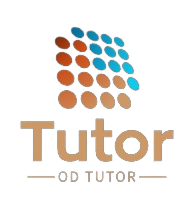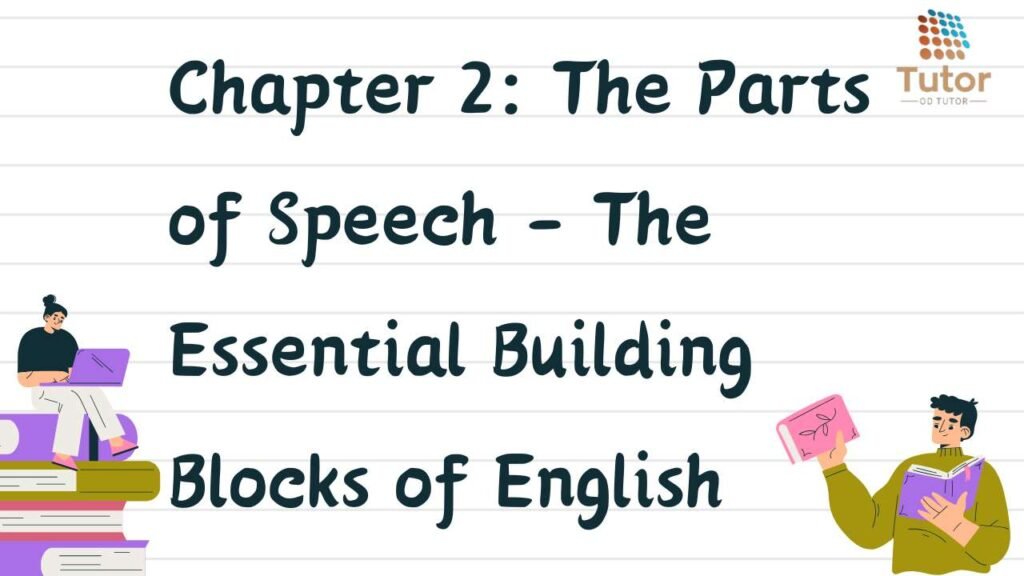Introduction: The Eight Word Families
Imagine you are building a house. You need bricks, wood, cement, wires, and pipes. You wouldn’t try to build a wall with only wires or a roof with only pipes. Each material has a specific purpose. Language is the same. To build sentences—from the simplest “I am.” to the most complex philosophical argument—you need raw materials. These are the Parts of Speech.
In the previous chapter, we mastered a specific tool: articles (a, an, the). We learned they are tiny words that signal a noun is coming and tell us whether that noun is specific or general. Now, it’s time to step back and see the whole workshop. Every word in the English language can be categorized into one of eight parts of speech based on its function within a sentence.
Understanding these eight categories is the single most important step in mastering English grammar. It allows you to understand not just what a word means, but how it behaves. Let’s meet them.
The Eight Parts of Speech:
- Nouns
- Pronouns
- Verbs
- Adjectives
- Adverbs
- Prepositions
- Conjunctions
- Interjections
1. Nouns: The Namers
Definition: A noun is a word that names a person, place, thing, idea, quality, or action. It is the subject matter of our sentences; it’s what we talk about.
Functions in a Sentence: A noun can be the subject (the doer of the action), the object (the receiver of the action), or the complement (a word that completes the meaning).
Categories of Nouns with Examples:
- Common Nouns: General names for people, places, things (not capitalized).
- People:
woman,man,teacher,chef - Places:
city,park,restaurant,country - Things:
book,computer,tree,music
- People:
- Proper Nouns: Specific names of people, places, or things (always capitalized).
- People:
Maria,Dr. Smith,Shakespeare - Places:
London,Central Park,The Louvre - Things:
Microsoft,Harry Potter,Monday
- People:
- Concrete Nouns: Things you can perceive with your five senses.
rain,perfume,thunder,sand,chocolate
- Abstract Nouns: Things you cannot see, touch, etc.—they name ideas, feelings, and qualities.
love,freedom,happiness,time,justice
- Countable Nouns: Things that can be counted (use
a/anand can be plural).one dog,three dogs,an idea,several ideas
- Uncountable Nouns: Things that cannot be counted as discrete units (do not use
a/anand are usually singular).water,advice,information,furniture,rice
- Collective Nouns: Words that name a group of individuals.
team,family,committee,flock,class
Connection to Articles: This is where our last chapter connects! Articles (a, an, the) are almost always followed directly by a noun (or its adjective). We say a book, an idea, the team. The type of noun (countable/uncountable, specific/general) determines which article we use.
2. Pronouns: The Replacements
Definition: A pronoun is a word that takes the place of a noun to avoid repetition. The noun it replaces is called the antecedent.
Why we use them: Compare these sentences:
- Without a pronoun: “Tom said that Tom finished Tom’s work.”
- With a pronoun: “Tom said that he finished his work.”
The second sentence is clear, efficient, and natural.
Categories of Pronouns with Examples:
- Personal Pronouns: Refer to specific people or things.
- Subject Pronouns:
I,you,he,she,it,we,they(He runs.) - Object Pronouns:
me,you,him,her,it,us,them(She called me`.) - Possessive Pronouns:
mine,yours,his,hers,its,ours,theirs(The book is mine`.)
- Subject Pronouns:
- Relative Pronouns: Introduce a clause that describes a noun (relative clause).
who,whom,whose,which,that- “The woman who called you is my boss.”
- Demonstrative Pronouns: Point out specific things.
this,that,these,those- This is my favorite. Those are expensive.
- Indefinite Pronouns: Refer to non-specific people or things.
everyone,somebody,anything,nothing,each,many- Everyone is here. Is there anything to eat?
3. Verbs: The Engines
Definition: A verb is a word that expresses an action (run, think, create) or a state of being (is, seem, become). The verb is the heart of the sentence; without it, you do not have a sentence.
Categories of Verbs with Examples:
- Action Verbs: Show physical or mental action.
- Physical:
jump,write,build,drive - Mental:
think,believe,wonder,understand
- Physical:
- Linking Verbs: Do not show action. Instead, they connect the subject to more information about the subject (a subject complement). Common linking verbs include forms of
to be(is,am,are,was,were) and verbs likeseem,become,appear,feel,look,taste.- “She is a doctor.” (Links
shetodoctor) - “The soup tastes delicious.” (Links
souptodelicious)
- “She is a doctor.” (Links
- Helping (Auxiliary) Verbs: Help the main verb express tense, mood, or voice. They are used before the main verb.
am,is,are,was,were,be,been,being(Forms ofbe)have,has,had(Forms ofhave)do,does,did- Modals:
can,could,will,would,shall,should,may,might,must - “She is working.” (“Is” helps the main verb “working” show ongoing action.)
- “They have finished.” (“Have” helps the main verb “finished” show completed action.)
4. Adjectives: The Describers (of Nouns)
Definition: An adjective describes, modifies, or gives more information about a noun or pronoun. It answers the questions: What kind? Which one? How many?
Placement: Adjectives usually come before the noun they modify (a **red** car) or after a linking verb (the car is **red**).
Examples:
- “She bought a beautiful, large, wooden table.” (
beautiful,large,woodenall describe the nountable) - “The weather is pleasant.” (
pleasantdescribes the nounweathervia the linking verbis) - “He seems tired.” (
tireddescribeshe)
Special Note: Articles (a, an, the) are a special type of adjective! They are sometimes called “noun markers” because they signal that a noun is coming. They answer the question “Which one?” in a general (a, an) or specific (the) way.
5. Adverbs: The Modifiers
Definition: An adverb describes, modifies, or gives more information about a verb, an adjective, or another adverb. They are incredibly versatile. They often answer the questions: How? When? Where? Why? To what degree?
The “-ly” Trick: Many adverbs are formed by adding -ly to an adjective (quick → quickly). However, not all adverbs end in -ly (often, very, always, well), and not all words ending in -ly are adverbs (friendly is an adjective).
Examples by Function:
- Modifying a Verb: “She walked slowly.” (How did she walk?)
- Modifying an Adjective: “The test was extremely difficult.” (
extremelymodifies the adjectivedifficult, telling us to what degree) - Modifying Another Adverb: “He works incredibly fast.” (
incrediblymodifies the adverbfast, telling us how fast)
6. Prepositions: The Relaters
Definition: A preposition shows the relationship between a noun (or pronoun) and another word in the sentence. This relationship is often spatial (where?) or temporal (when?).
What they do: Prepositions almost always come in phrases (a preposition + its object, which is a noun or pronoun). The entire phrase acts as a single unit, usually as an adjective or adverb.
Common Prepositions & Examples:
- Time:
atnoon,onMonday,inJuly,fora year,since1999 - Place/Location:
athome,onthe table,inthe room,underthe bed,nearthe bank,betweenyou and me - Direction/Movement:
toschool,fromLondon,intothe car,towardthe finish line
In Sentences:
- “The book is on the table.” (The preposition
onshows the relationship betweenbookandtable.) - “We will meet after lunch.” (The preposition
aftershows the relationship betweenmeetandlunch.)
7. Conjunctions: The Connectors
Definition: A conjunction is a word that connects words, phrases, or clauses. They are the glue that holds complex thoughts together.
Categories of Conjunctions with Examples:
- Coordinating Conjunctions (FANBOYS): Connect elements of equal grammatical rank (word+word, phrase+phrase, independent clause+independent clause).
- For, And, Nor, But, Or, Yet, So
- “I like tea and coffee.” (Connects two words)
- “She was tired, but she finished the race.” (Connects two independent clauses)
- Subordinating Conjunctions: Connect an independent clause with a dependent (subordinate) clause, showing a relationship like cause/effect, time, or condition.
because,since,although,while,if,when,after,before- “We went inside because it started to rain.” (
becauseintroduces the reason) - “If you study, you will pass the test.” (
ifintroduces the condition)
- Correlative Conjunctions: Work in pairs to connect elements.
both/and,either/or,neither/nor,not only/but also- “She is both intelligent and hardworking.”
8. Interjections: The Exclaimers
Definition: An interjection is a word or phrase that expresses strong emotion or surprise. It is often followed by an exclamation point and stands alone from the rest of the sentence grammatically.
Examples:
Ouch!That hurt!Wow!What a beautiful view.Oh,I didn’t know that.Well,what do you think we should do?
The Power of a Single Word: Words with Multiple Personalities
A crucial concept to grasp is that a word’s part of speech is not defined by the word itself, but by its function in a specific sentence. The same word can be a noun in one sentence and a verb in another.
Let’s see this in action with the word “light“:
- As a Noun: “Please turn on the light.” (Here, “light” is a thing, the subject of our request.)
- As a Verb: “Could you light the candles?” (Here, “light” is an action.)
- As an Adjective: “She carried the light package.” (Here, “light” describes the noun “package,” meaning not heavy.)
Let’s try another: “****
- As a Noun: “His run was fast.” (Here, “run” is a thing, an event.)
- As a Verb: “He can run very fast.” (Here, “run” is an action.)
This is why you must always look at how a word is working within its sentence to label its part of speech correctly.
Conclusion: Building Your First Sentences
Now that you know the eight parts of speech, you have the blueprint for constructing any sentence in English. Let’s build a few simple ones to see how they work together.
- “Dogs bark.”
Dogs= Noun (subject)bark= Verb (action)
- “The intelligent student studied diligently.”
The= Article/Adjectiveintelligent= Adjective (describes the noun)student= Noun (subject)studied= Verb (action)diligently= Adverb (describes the verb how)
- “She and I went to the new cafe, but it was closed.”
She= Pronoun (subject)and= ConjunctionI= Pronoun (subject)went= Verbto= Prepositionthe= Article/Adjectivenew= Adjectivecafe= Noun (object of the preposition)but= Conjunctionit= Pronoun (subject)was= Verb (linking verb)closed= Adjective (subject complement)
With this framework, you are no longer just memorizing words; you are understanding their roles and relationships. This knowledge is the foundation for everything that follows, from mastering tenses to crafting elegant, complex sentences.
In our next chapter, we will dive deeper into our first part of speech: Nouns. We will explore the different types in more detail and learn how to make them plural, possessive, and how they function as the cornerstone of every sentence we speak or write.

